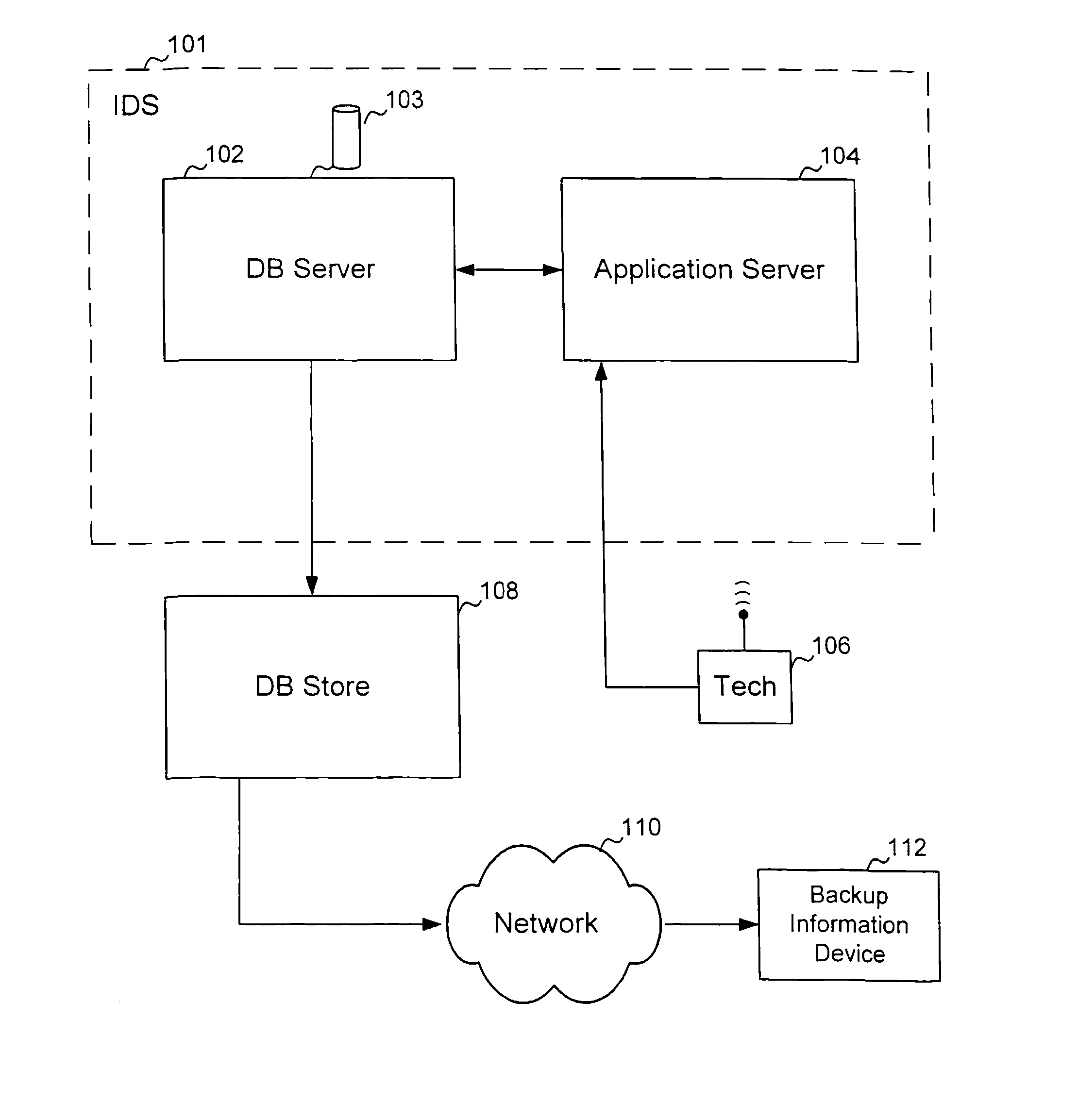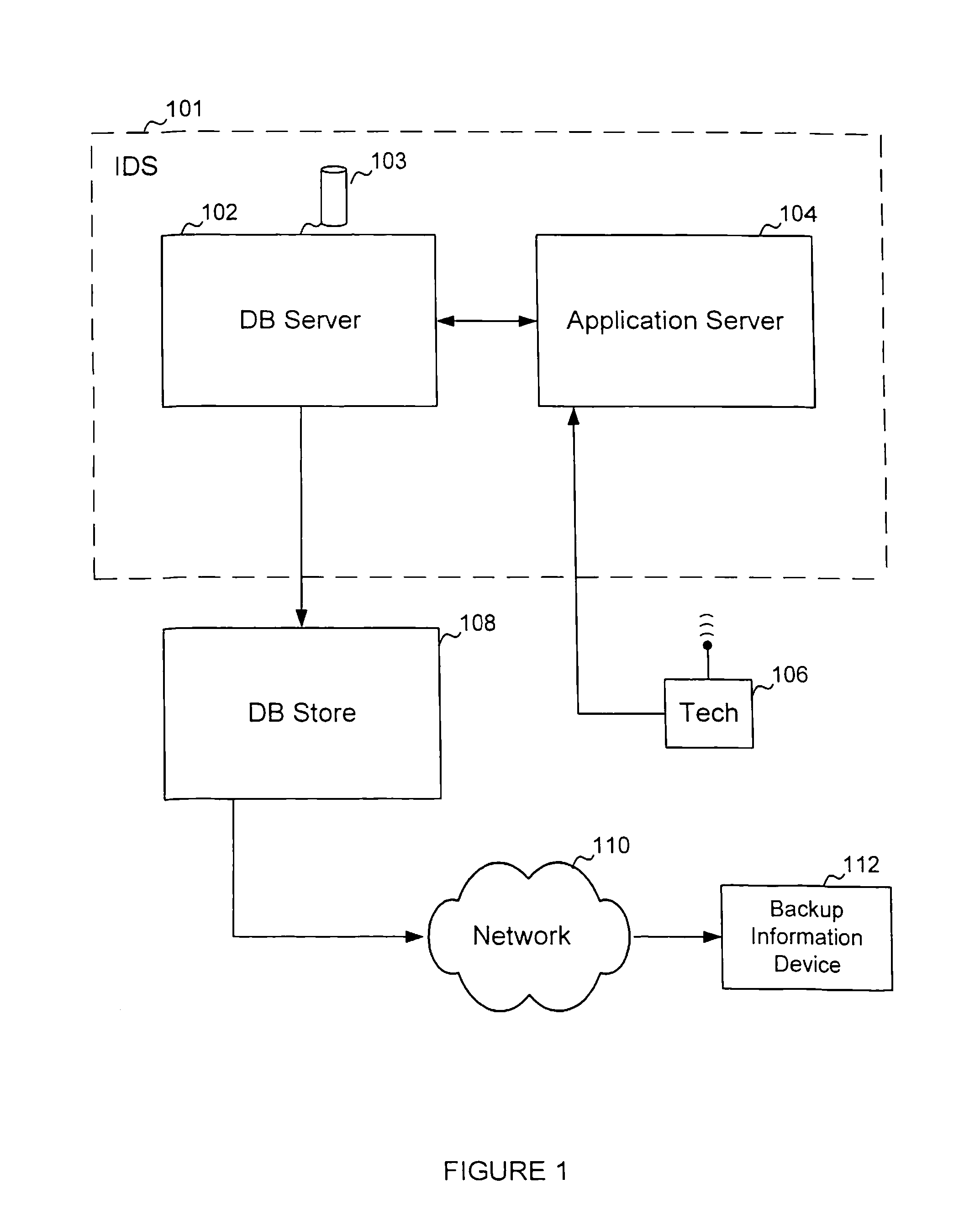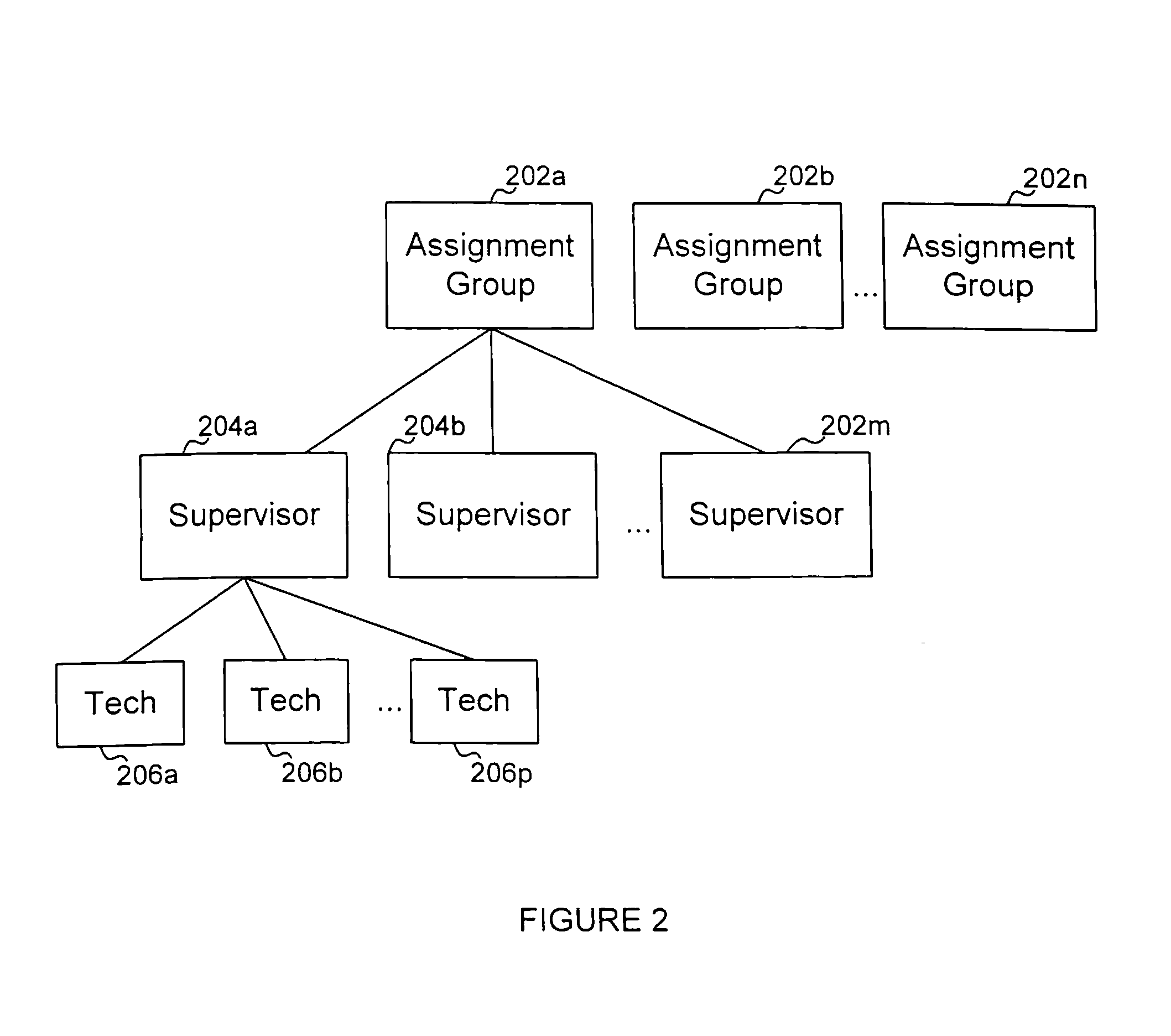System and method for providing service technicians access to dispatch information
a technology for dispatch information and service technicians, applied in the field of providing access to dispatch information, can solve the problems of limited capacity, inability to efficiently determine where they should be or what jobs to complete, so as to avoid capacity constraints
- Summary
- Abstract
- Description
- Claims
- Application Information
AI Technical Summary
Benefits of technology
Problems solved by technology
Method used
Image
Examples
Embodiment Construction
[0019]FIG. 1 is a schematic diagram of a preferred embodiment of a system for providing access to distribution information for a service technician if an IDS fails according to an embodiment of the present invention. An IDS 101 includes a database server 102 and an application server 104. An exemplary database server 102 is the V2600 available from Hewlett-Packard Company of Palo Alto. Calif. An exemplary application server is the N4000 available from Hewlett-Packard Company. In general, IDS 101 can have one or more database servers and one or more application servers. In addition, there can be multiple instances of IDS 101 to perform dispatch functions in multiple geographies. For example, one IDS instance can be assigned to perform dispatch functions for the western part of a service area, and another IDS instance can perform dispatch function for the eastern part of a service area.
[0020] Application server 104 preferably executes the IDS application. Database server 102 preferab...
PUM
 Login to View More
Login to View More Abstract
Description
Claims
Application Information
 Login to View More
Login to View More - R&D
- Intellectual Property
- Life Sciences
- Materials
- Tech Scout
- Unparalleled Data Quality
- Higher Quality Content
- 60% Fewer Hallucinations
Browse by: Latest US Patents, China's latest patents, Technical Efficacy Thesaurus, Application Domain, Technology Topic, Popular Technical Reports.
© 2025 PatSnap. All rights reserved.Legal|Privacy policy|Modern Slavery Act Transparency Statement|Sitemap|About US| Contact US: help@patsnap.com



